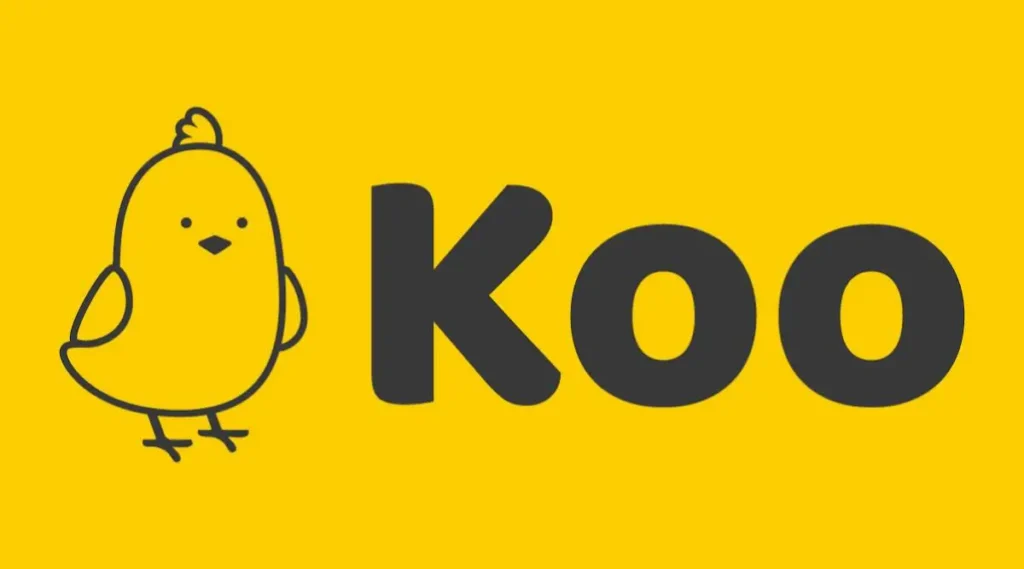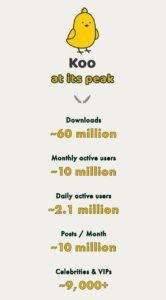Koo, India’s Twitter-like Social Media App, is Shutting Down: Here’s Why

In a surprising turn of events, Koo, the Indian microblogging platform designed to rival X (formerly known as Twitter), is shutting down. Despite its initial popularity and potential, the platform has faced numerous challenges that have ultimately led to this decision. This blog will explore the reasons behind Koo’s closure, its journey, and the impact it had on social media in India and beyond.

The Rise of Koo
Koo was launched with the ambition to provide an alternative to Twitter for Indian users. The platform gained significant traction in 2021 when the Indian government had disputes with Twitter over the non-removal of certain content. During this period, several government officials and departments migrated to Koo, boosting its visibility and user base.
Government Backing and Popularity Surge
The Indian government’s endorsement played a crucial role in Koo’s initial success. Key ministers and departments began using the platform, and it quickly became a hub for government communications. Prominent figures such as Piyush Goyal, Ravi Shankar Prasad, and authors like Amish Tripathi joined Koo, lending it credibility and attracting more users.
Innovative Features and Local Language Support
Koo’s interface was similar to Twitter, allowing users to categorize posts with hashtags and tag others in mentions or replies. It also introduced innovative features such as “Talk to Type,” which enabled voice-to-text functionality. One of Koo’s standout features was its support for multiple Indian languages, including Hindi, Telugu, Tamil, Bengali, Gujarati, Marathi, Assamese, and Punjabi. This multilingual approach aimed to cater to a broader audience across India.
Expansion Efforts and International Reach
Koo didn’t limit its ambitions to India. In 2021, the platform expanded its presence to Brazil, where it saw over 1 million downloads within 48 hours of its launch. This rapid adoption highlighted Koo’s potential to compete on a global scale. Brazilian celebrities like Babu Santana, Claudia Leitte, and author Rosana Hermann were among its early adopters, further driving its popularity in the country.
Funding and Strategic Initiatives
Koo secured significant funding to support its growth. After winning the Atmanirbhar App Innovation Challenge, part of the Indian government’s “Make in India” initiative, the platform attracted $60 million in investment from renowned investors such as Tiger Global and Accel. This funding was expected to propel Koo to new heights, both in India and internationally.
In 2022, the Micro, Small and Medium Enterprises and Export Promotion Department of the Government of Uttar Pradesh signed a Memorandum of Understanding with Koo. The aim was to promote the “One District, One Product” initiative, showcasing the platform’s potential for collaboration with government projects.
Challenges and Struggles
Despite its initial success, Koo faced significant challenges. The primary issue was its inability to secure partnerships with larger internet companies, conglomerates, and media houses. Co-founder Mayank Bidawatka revealed in a recent LinkedIn post that while the company explored numerous partnership opportunities, these discussions did not result in any concrete deals. Additionally, some potential partners shifted their priorities just before finalizing agreements.
The Morning Context reported that a deal between Koo and DailyHunt fell through, further hindering the platform’s growth prospects. While Koo’s expansion in Brazil was promising, it struggled to maintain the same momentum in the Indian market.
User Base and Engagement
Koo’s user base saw an initial surge due to the support from Indian government officials and celebrities. However, sustaining user engagement proved challenging. The platform’s reliance on government backing and the novelty of being an indigenous alternative to Twitter wasn’t enough to retain users in the long run. Many users eventually returned to more established platforms like Twitter, where they had larger networks and more content diversity.
Technical and Operational Hurdles
Running a social media platform requires robust technical infrastructure and constant innovation. Koo faced operational challenges in scaling its technology to handle a growing user base while maintaining a seamless user experience. Technical glitches, limited features compared to global competitors, and the pressure to continuously innovate contributed to the platform’s struggles.
Competitive Landscape
The social media landscape is highly competitive, with established players like Twitter, Facebook, and Instagram dominating the market. For Koo, carving out a significant share of this market was always going to be a daunting task. Despite its unique selling points, the platform struggled to differentiate itself sufficiently to draw users away from these well-established networks.
Community and Content Moderation
One of the critical aspects of any social media platform is content moderation. Ensuring that the platform remains a safe and welcoming space for users requires substantial resources and expertise. Koo faced challenges in moderating content effectively, which sometimes led to negative user experiences and reputational issues.
Cultural and Societal Factors
Cultural and societal factors also played a role in Koo’s journey. While the platform aimed to cater to Indian users by supporting multiple languages, it faced the challenge of uniting a diverse user base with varying preferences and needs. Balancing these factors while maintaining a cohesive user experience was a significant hurdle.
The Decision to Shut Down
Ultimately, the decision to shut down Koo was driven by its inability to secure essential partnerships and sustain user growth. Despite its innovative features and initial success, the platform couldn’t overcome the myriad challenges it faced. Co-founder Mayank Bidawatka’s announcement highlighted the disappointment of coming close to significant deals that could have turned the tide but ultimately didn’t materialize.
Koo’s Unique Strengths and Achievements
Koo built a globally scalable product in a fraction of the time that X/Twitter did, with superior systems, algorithms, and a strong stakeholder-first philosophy. The platform boasted a 10% like ratio, significantly higher than Twitter’s, making it a more favorable platform for creators. At its peak, Koo had about 2.1 million daily active users and around 10 million monthly active users, including over 9000 VIPs from various fields. The company was on the verge of surpassing Twitter in India in 2022, had it secured the necessary capital to support its growth.
Impact and Legacy
Koo’s journey offers valuable lessons for startups and entrepreneurs. It underscores the importance of securing strategic partnerships, maintaining user engagement, and continuously innovating to stay competitive. While Koo’s shutdown is a setback, it also serves as a reminder of the dynamic and challenging nature of the tech industry.
The prolonged funding winter significantly impacted Koo’s plans, forcing the company to tone down its growth trajectory. Social media is one of the toughest sectors to build in, even with ample resources, as user growth needs to reach a significant scale before revenue generation becomes feasible. Koo needed five to six years of aggressive, long-term, and patient
their founder has left these last words about Koo:





And also read our latest blog : Stan Ignites the Esports World with $2.7 Million Funding: A New Social Haven for Gamers.








1 thought on “Koo, India’s Twitter-like Social Media App, is Shutting Down: Here’s Why”